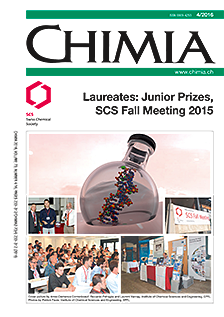Halogen Chemistry on Catalytic Surfaces
DOI:
https://doi.org/10.2533/chimia.2016.274Keywords:
Ceria-zirconia, Hydrogen halides, Oxidation, Prompt gamma activation analysis, Rutile-type oxidesAbstract
Halogens are key building blocks for the manufacture of high-value products such as chemicals, plastics, and pharmaceuticals. The catalytic oxidation of HCl and HBr is an attractive route to recover chlorine and bromine in order to ensure the sustainability of the production processes. Very few materials withstand the high corrosiveness and the strong exothermicity of the reactions and among them RuO2 and CeO2-based catalysts have been successfully applied in HCl oxidation. The search for efficient systems for HBr oxidation was initiated by extrapolating the results of HCl oxidation based on the chemical similarity of these reactions. Interestingly, despite its inactivity in HCl oxidation, TiO2 was found to be an outstanding HBr oxidation catalyst, which highlighted that the latter reaction is more complex than previously assumed. Herein, we discuss the results of recent comparative studies of HCl and HBr oxidation on both rutile-type (RuO2, IrO2, and TiO2) and ceria-based catalysts using a combination of advanced experimental and theoretical methods to provide deeper molecular-level understanding of the reactions. This knowledge aids the design of the next-generation catalysts for halogen recycling.Downloads
Published
2016-04-27
Issue
Section
Scientific Articles
License
Copyright (c) 2016 Swiss Chemical Society

This work is licensed under a Creative Commons Attribution-NonCommercial 4.0 International License.
How to Cite
[1]
M. Moser, J. Pérez-Ramírez, Chimia 2016, 70, 274, DOI: 10.2533/chimia.2016.274.







